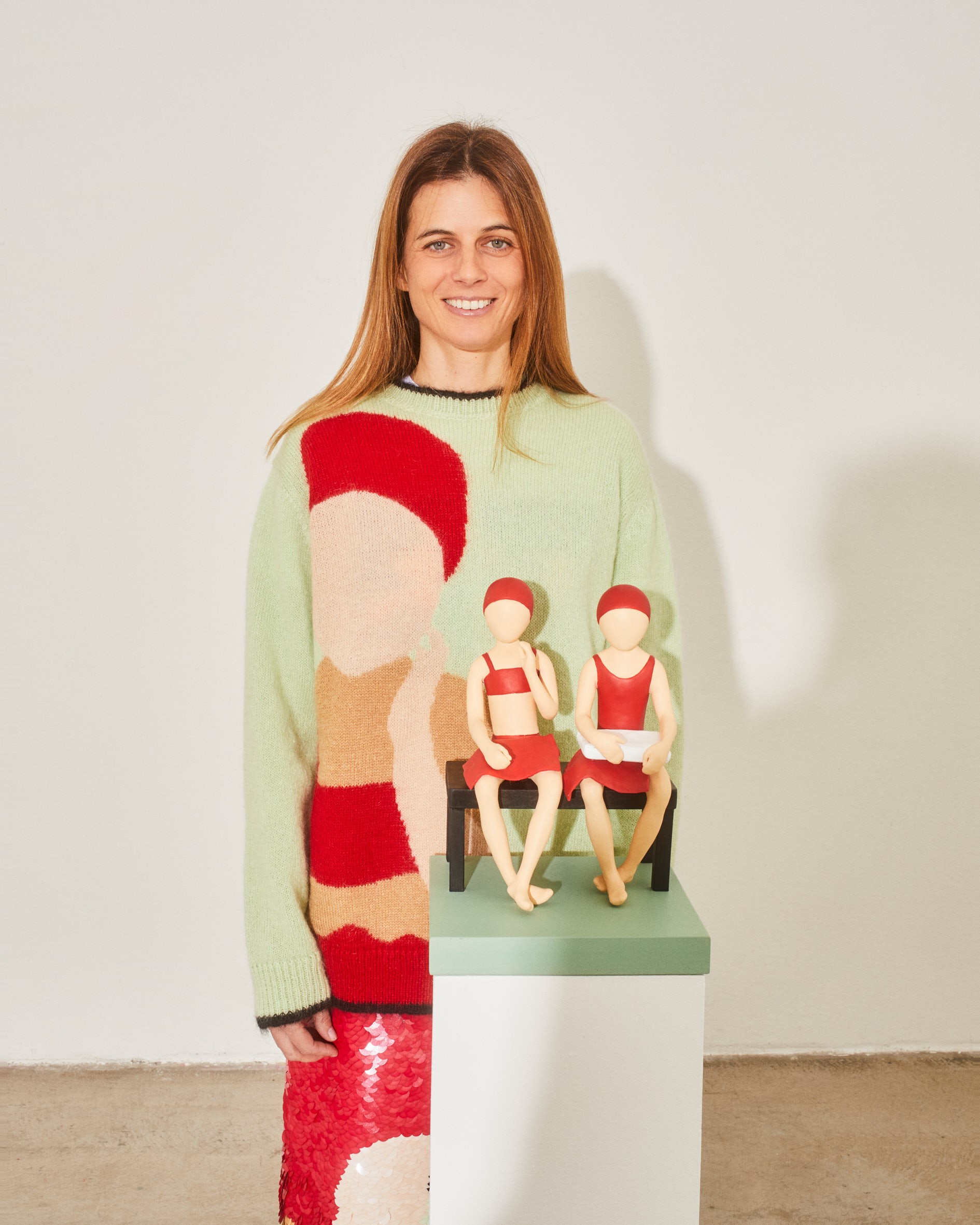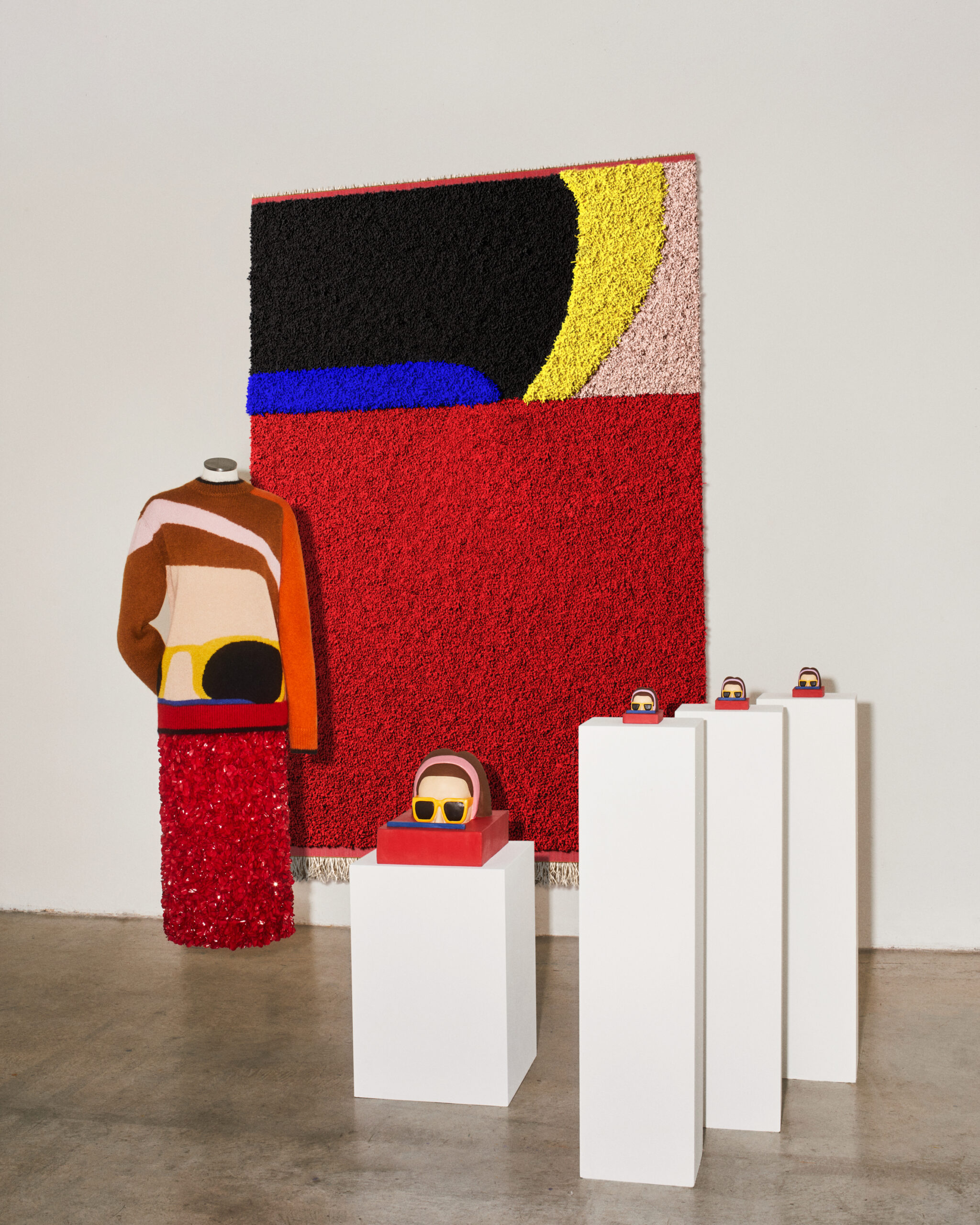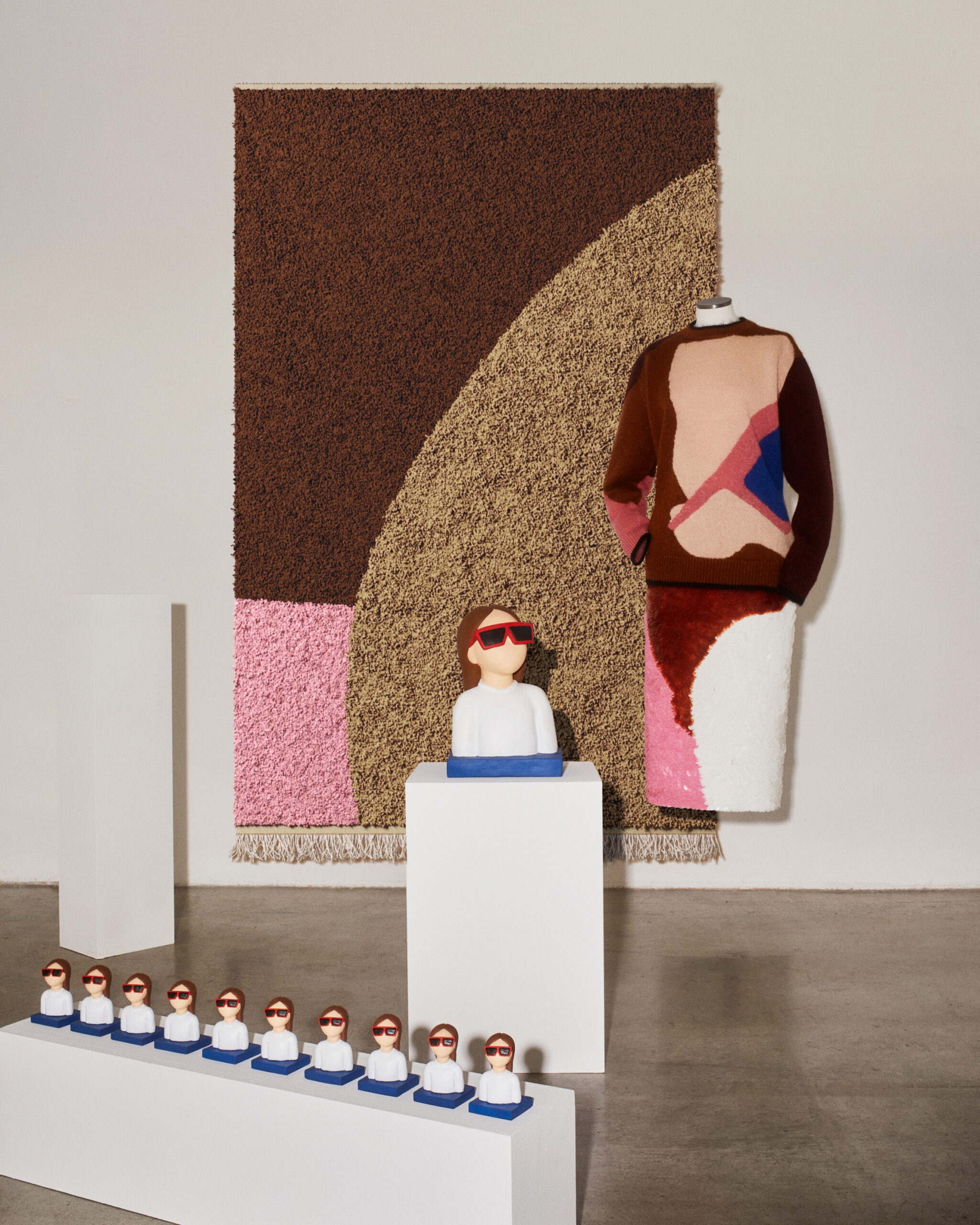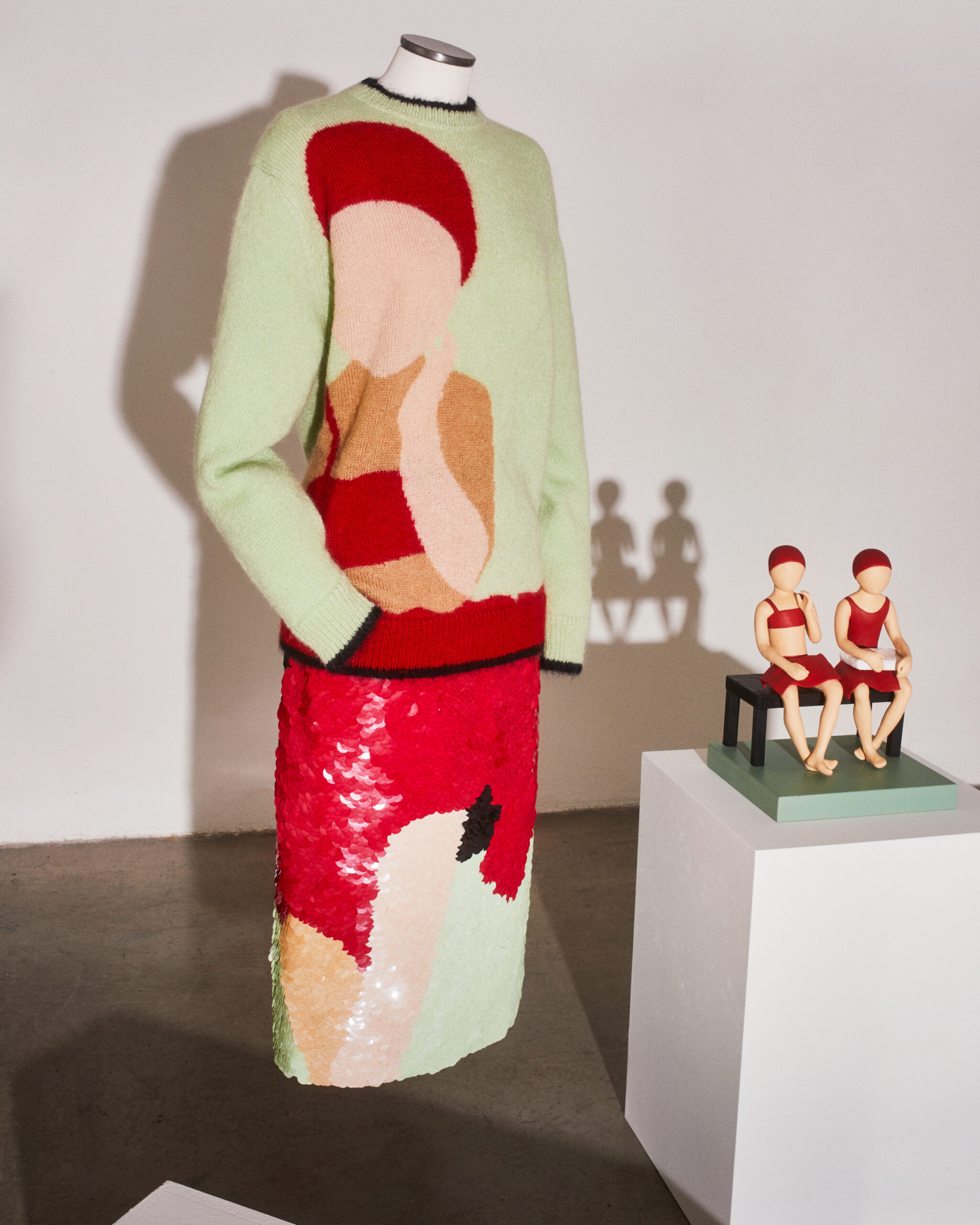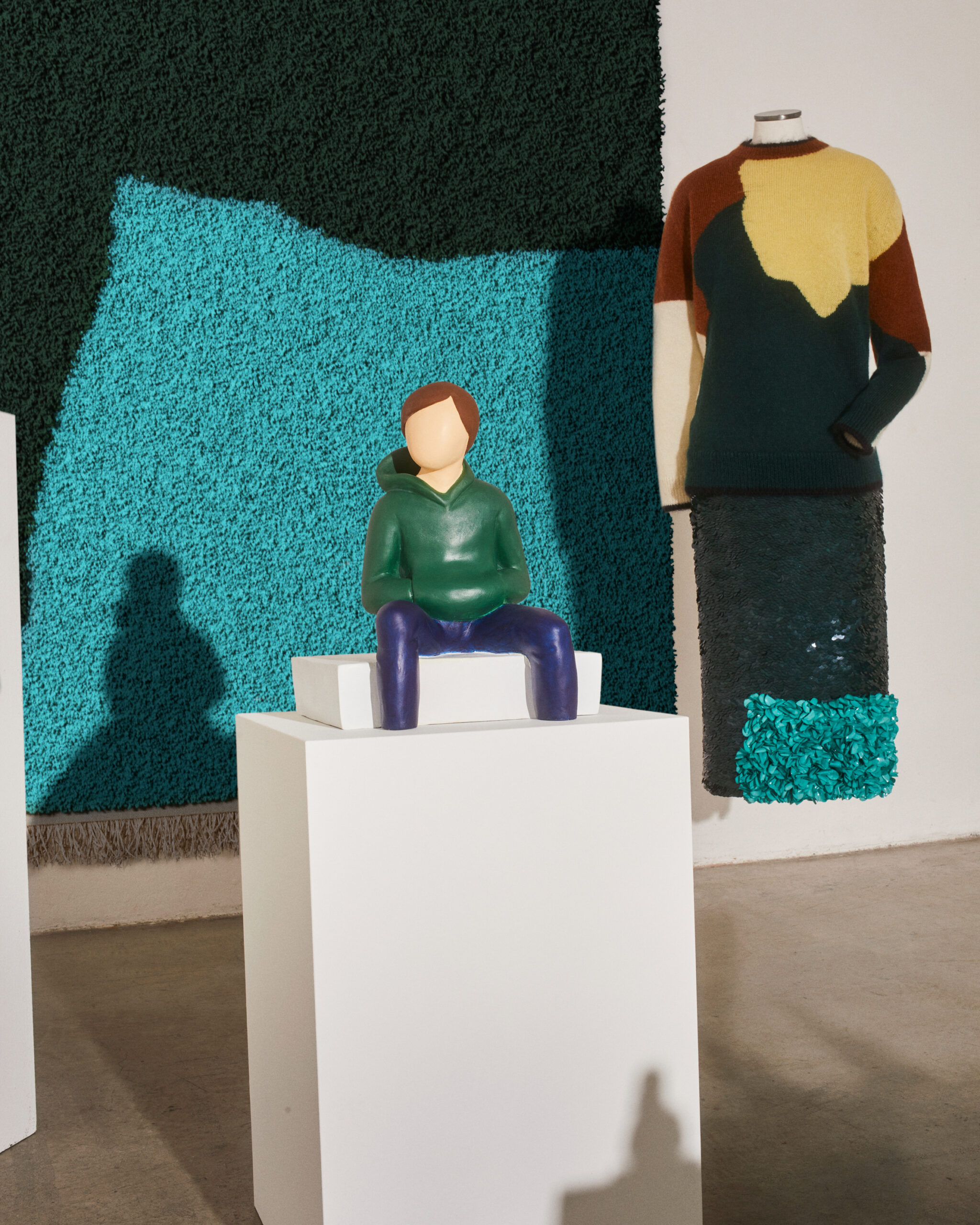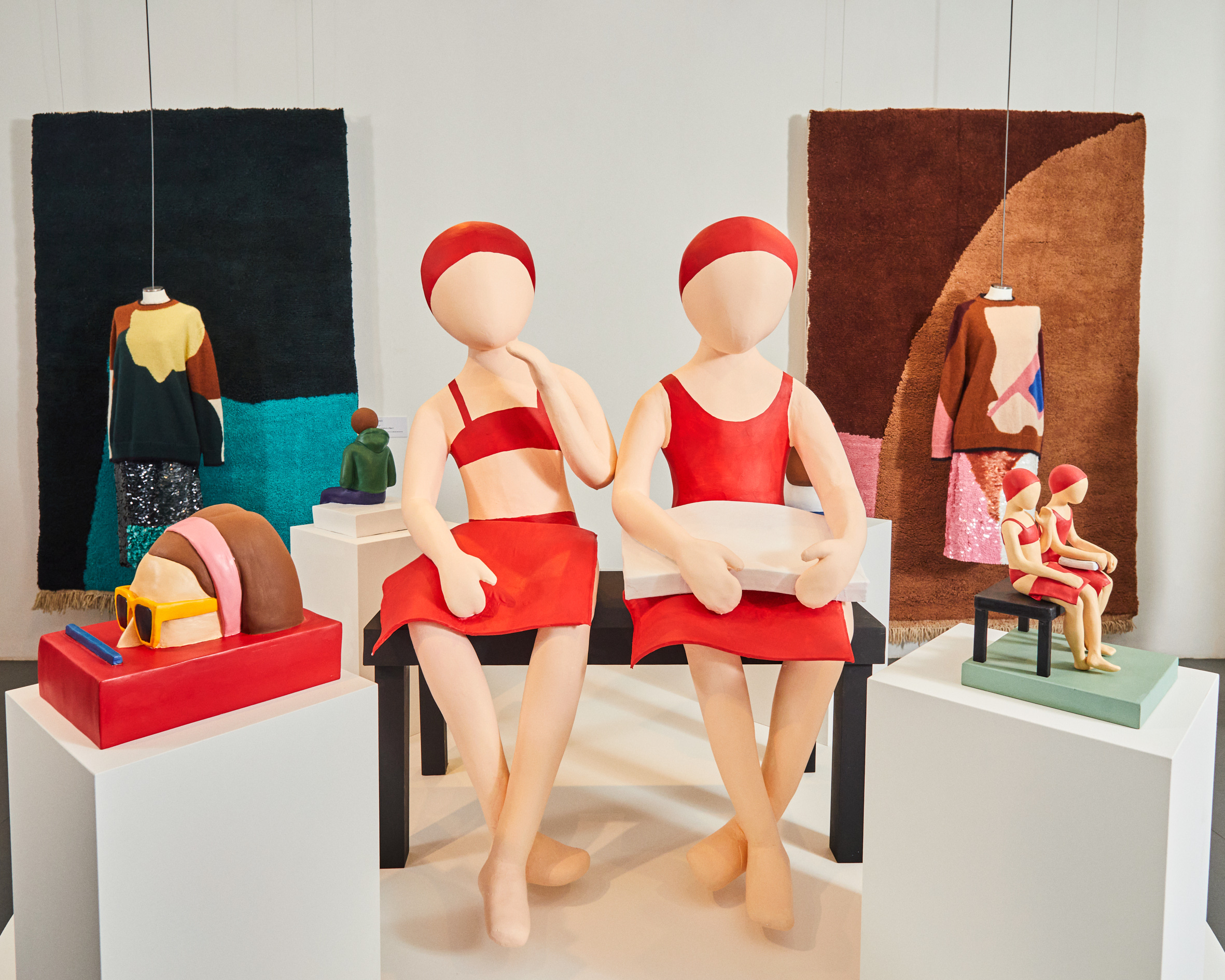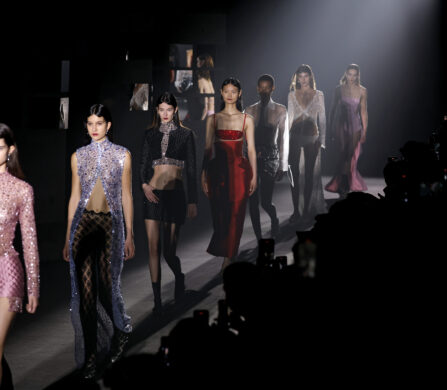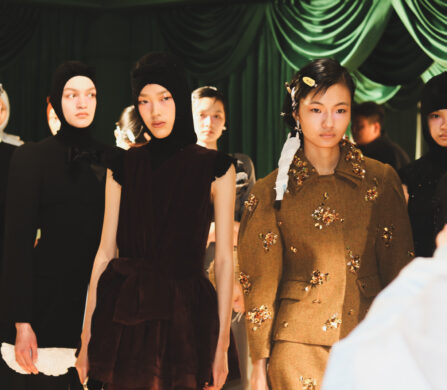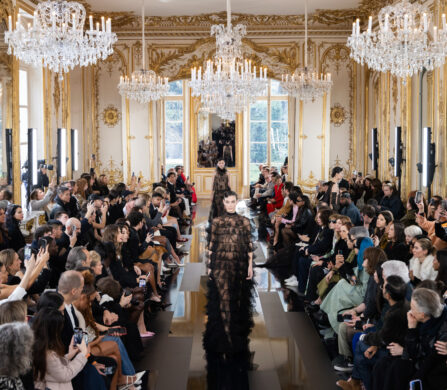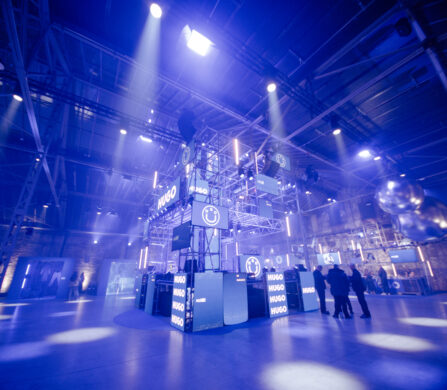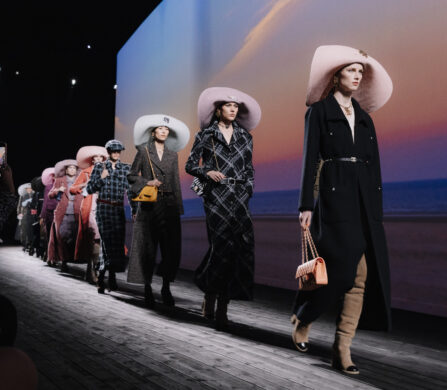Carolina Castiglioni is melding art, fashion, and family together with her latest project, Ritratti. Providing a glimpse into her family life, she tells Schön!, “I don’t share my private life on social media, but I take a lot of pictures during my trips or with my family. Most of the time, I keep these images for myself, for future inspiration or, in this case, to be used as prints for the collection.”
As the daughter of Marni’s founders, Castiglioni grew up surrounded by fashion, starting her own brand, Plan C, in 2018. Constantly inspired by abstract art, she selected a few prints used in previous collections and created sculptures based on them, featuring herself, her children, and a family friend. Designing a small capsule collection and working with Trame Paris to create custom rugs truly brought the project to life. Having already been shown in Milan, New York and Tokyo, the Ritratti project is now headed to Andreas Murkudis in Berlin from October 21st until November 4th.
In conversation with Schön!, Castiglioni details her work on sculptures, collaborating with Trame Paris, and the Ritratti project.
Using a selected range of prints from Plan C items as a starting point, was it always clear what you wanted the sculptures to look like or did you play around with a few styles?
The creative process started with portraits I took of my children and myself over time. These were digitised, coloured, and used as graphics for our regular jersey collection. When I started thinking about the Ritratti (means portraits) project, I wanted to work around these subjects to create a multifaceted project combining art, fashion, and design. Inspiration comes from figurative and abstract art. The portraits were transformed into colourful resin sculptures, handmade by a skilled artisan in Milan, starting from white chalk and polymeric clay artefacts and used to create silicone rubber moulds. These are filled with resin and hand-painted. I like the tactility of the material and the imperfections of the handmade.
How were the sculptures developed? Was there a lot of trial and error?
As previously mentioned, they were handmade by an artisan. We made the first 3D drawing of how we imagined the result to be. The artisans worked on the first clay prototype and from there, we made all the adjustments – even the smallest details – to arrive at the exact shape I had in mind. It was a long process with a lot of steps to arrive at the final version.
The sculptures are accompanied by a small capsule collection containing t-shirts, mohair sweaters, and sequined skirts. Did the design process for the garments come before or after the sculptures?
The garments arrived after the sculptures. At the very beginning, I focused only on the sculptures and miniatures, but when they came to life, I realised I needed to surround them with a special collection to describe how my creative world works – where everything is connected to different disciplines. I wanted these items to be special and unique, out of our regular collection, even though so related. I used existing shapes and worked them in a special way. The sequin skirts are, for example, all hand embroidered.
The limited edition capsule collection also collaborates with Trame Paris. Were you familiar with the brand prior to working with them?
I got to know Trame at Salone del Mobile some years ago while I was decorating my new house. I liked their rugs so much that I bought two of them. The apartment has been featured in many décor magazines and the owner of Trame sent me an email to thank me for the visibility the rugs were having. We got to know each other and started from there, thinking of including handmade rugs in the Ritratti collection.
This project combines fashion, art, and design wonderfully. How has working on this project helped you explore different parts of your creativity?
It is very normal for me to include my work inspiration coming from different worlds. It is part of my background. I studied arts at high school and back at Marni, I was the Creative Director of Special Projects focusing on design. I have the same approach to a dress or a chair: all objects to me are part of my own aesthetic.
The sculptures are inspired by yourself and your children. Why were these sculptures essential to represent important people in your life?
I’m a very reserved person. I don’t share my private life on social media, but I take a lot of pictures during my trips or with my family. Most of the time, I keep these images for myself, for future inspiration or, in this case, to be used as prints for the collection. Images are digitised so that the subject becomes abstract.
The project has already been shown in Milan, New York and Tokyo and is headed to Berlin in October. Did you expect this kind of positive response when in the development stages?
The journey of Ritratti has evolved over time. When we were working on the first exhibition for Milan’s Furniture Fair, we didn’t have plans for further events. When showing this project to our partners and clients, we understood there was a huge interest in proposing Plan C through this special project as a way to show this strong connection with other disciplines.
Are you considering incorporating similar elements into future collections?
I continue to use new prints in the collection that come from pictures I take, so yes, this is part of my creative process. I like to insert personal elements into the collection. The most successful print of the collection is two drawings of my daughter Margherita that are now part of the carryover collection.
The Ritratti project and exhibition opens at Andreas Murkudis in Berlin from October 21st until November 4th. Learn more about the project here.
images. Plan C
interview. Amber Louise












